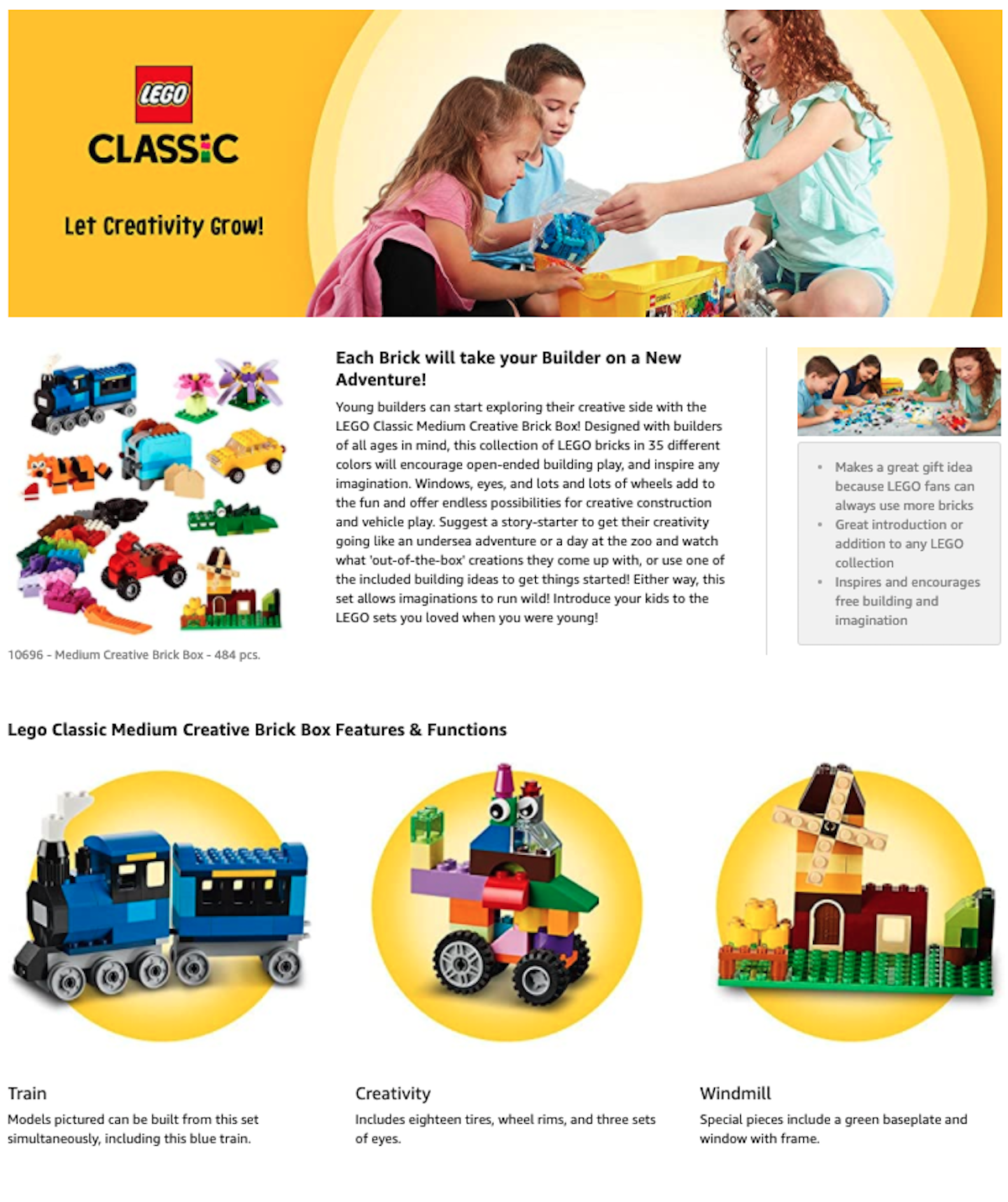4 Reasons Why Online Toy Sales Continue to Expand | Salsify

Toy sales in the U.S. increased by 26% year-over-year in March, according to analytics firm NPD, with categories like jigsaw puzzles (up 228%), building sets (up 76%), and crafts (up 70%) driving some of the most significant spikes. As families around the world adapt to the ongoing COVID-19 crisis — and find new ways to pass the time together — this growth isn't surprising.
But even before the outbreak of this crisis, shoppers were increasingly turning to online channels to purchase toys. While sales of toys and sporting goods made up 10% of online sales in the U.S. in 2011, according to a 2019 report from eMarketer, predictions showed it growing to 28% by 2021.
There are several reasons why consumers are becoming increasingly inclined to "play" digitally, but the biggest driving factors are price-comparison capabilities, a broader selection of products, engaging product content, and convenience.
Price-Comparison Capabilities
Online shoppers can quickly and easily compare prices for toys across a wide selection of sales channels. Amazon, Target, Walmart, and other online retailers compete in a variety of ways to convince toy shoppers to buy, but the price is one of the most significant factors for final buying decisions.
While some shoppers maintain loyalty to select online channels, the price can compel shoppers to try a new online retailer or direct-to-consumer (D2C) site — after all, the latest LOL Surprise! or Paw Patrol toy will be the same regardless of where the shopper purchased it.
A Broader Selection of Products
While in-store toy selections can be vast depending on the brick-and-mortar store, an online retailer like Amazon has thousands — even millions — of products.
A toy category like "Building Tools" offers over 10,000 products on Amazon. "Stuffed Animals and Plush Toys" provides a selection of over 40,000 products. Online retailers can offer a broader range of products online, spanning ages, categories, interests, featured characters, and brands.
During the 2019 holiday season, 59% of shoppers planned to purchase toys online, according to a survey from CivicScience. While toy buying is more concentrated during the end-of-the-year holiday season, the recent spike in demand for toys, combined with ongoing demand stemming from birthdays and other gift-giving events, highlights the massive opportunity for toy brands to meet customers online.

Image Source: LEGO Amazon
Engaging Product Content
As shoppers ricochet from online to offline venues, engaging product experiences can make a significant difference for consumers. Enhanced content, including graphics, videos, comparison charts, and 360-degree product spins, can help brands boost conversion by up to 10% across most categories, according to 2019 internal Salsify data.
As 79% of shoppers have not purchased a product due to a problem with product content, according to the 2020 Salsify consumer research report, enhanced content helps brands meet these new consumer demands for information. Product content serves as the new digital packaging for a brand, allowing consumers to connect with products in a new way.
Consider the in-store versus the online experience of buying a LEGO Classic set: An brick-and-mortar shopper can pick up the set in-store and view the colorful images on the packaging to learn about the product. An online shopper, however, can watch a video of children unboxing the set and building it — and can compare this set to five other LEGO sets to find the option that best fits her needs.
As shoppers continue to move online, brand manufacturers have a new opportunity to engage them online — wherever consumers find their products.
Convenience
More than ever, convenience has made an enormous difference for online shoppers. As shelter-in-place and social distancing orders continue to keep many out of brick-and-mortar stores, many shoppers have moved online — many for the first time.
It's simple: Having the ability to purchase toy products online 24/7 — and often in tandem with essential household purchases — saves time and energy.
The New World of Commerce
While the long-term impact of COVID-19 on the toy industry is still unclear, the demand for digital transformation was emerging long before this crisis. As shoppers continue to shop online, brands that embrace the digital shelf and adapt to shifting consumer demands will be able to find a place in the new world of commerce.
Written by: Carol Krol
Recent Posts
Omnichannel Strategy: Here Are the Top 3 Drivers of Omnichannel Profitability
Digital-Influenced Retail Will Describe 70% of U.S. Sales by 2027 — What Does This Mean for Brands?
How Frequently Do Retailer Requirements Change — and How Can Brands Keep Up?
Subscribe to the Below the Fold Newsletter
Standing out on the digital shelf starts with access to the latest industry content. Subscribe to Below the Fold, our monthly content newsletter, and join other commerce leaders.

